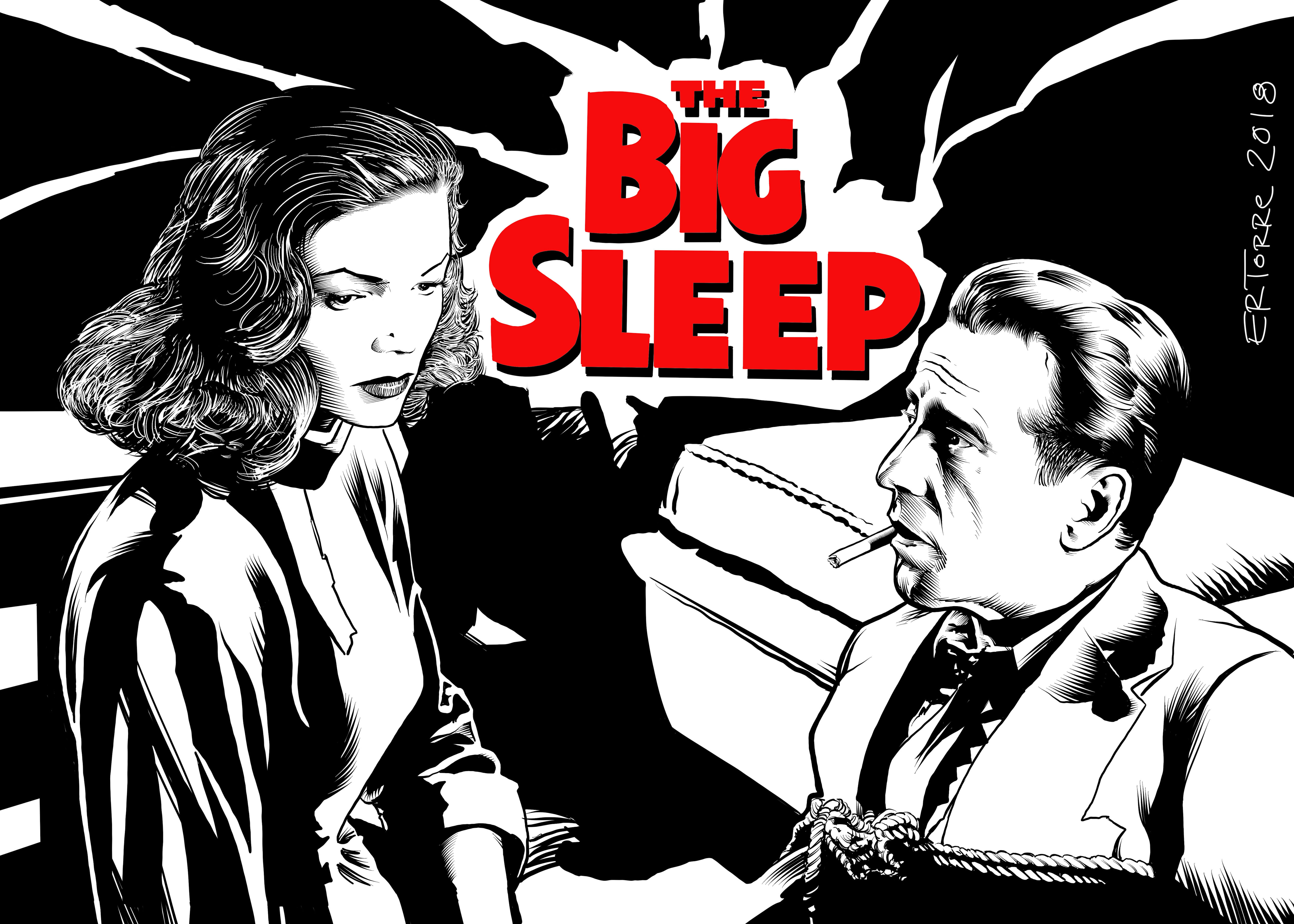A couple of days ago I noted the release of The Annotated Big Sleep, a new printing of Raymond Chandler’s masterful noir crime tale originally released in 1939 which is presented here with a multitude of footnotes explaining the ins and outs of this novel.
I’ve read the novel at least three or maybe more times before and re-reading it with the footnotes proved a great delight. There was one thing, however, more than any other thing that really stuck with me, and has stuck with me, since finishing reading this Annotated edition a few days before, and its worth pointing out.
The footnote in question involves an overview of the novel itself and the novel’s place in comparison to other similar novels. It involves the novel’s end and, therefore, involves elements which are clear SPOILERS.
Still, I want to write about this but, if you haven’t read the novel and want to give it a read, look away from here and get the book and read it. It’s worth it.
Otherwise…
SPOILER ALERT!!!!!
YOU HAVE BEEN WARNED!!!!
Still there?
After the novel’s conclusion and in the second to last footnote presented in the Annotated Edition of this novel, we’re presented with this summary of The Big Sleep’s story:
“What Happened?” Carmen asks (protagonist private detective) Marlowe after trying to kill him. “Nothing,” he responds. Raising the question: What actually has happened in The Big Sleep?
There follows a description of the various story elements and characters presented in the novel. What is astonishing is that you come to realize in this notation that so many things happened before Marlowe but could well have happened with Marlowe there as well as not there!
Characters are killed before Marlowe can “save” them… indeed, other than the one person Marlowe himself kills toward the end of the book, every one of these deaths would have happened whether Marlowe was around or not. There’s even one notable killing, the chauffeur’s, which is famously never satisfactorily resolved at all!
Further, Marlowe never really “helps” anyone and, despite the book’s opening hinting at Marlowe being a Knight who will perhaps save a damsel in distress -we are presented a painting depicting such a thing- ultimately Marlowe becomes, at the book’s climax, the tied up “damsel in distress” who is saved by a woman!
And if you think even more about it, the mystery presented in The Big Sleep is not such a big mystery to just about all the major ancillary characters in the book. In the end, the people who don’t know what’s going on are Marlowe, the man who hires him, and the reader. By the end of the story the reader and Marlowe finally know what’s happening. However, the man who hired him, the man who desperately wants to know what happened to another person, is left in the dark as Marlowe decides the truth would be too much for him to know.
As the footnote concludes:
Even the dead body, the traditional beginning point of so many murder mysteries, is only located at the end. The genre has been turned -not so much upside down as inside out.
That last bit really hits home: The genre has been turned -not so much upside down as inside out.
A number of years ago I first saw the Alfred Hitchcock film The Birds. Considered by many to be a stone cold classic, I didn’t like the film. In fact, though a huge fan of Mr. Hitchcock’s films, I thought it was a bust. Then, a few years later, I saw the film again and it hit me: The Birds was Mr. Hitchcock taking on the very popular 1950’s monsters-on-the-loose genre… but inverting every cliche there was in it. Instead of “giant” insects or animals, we have a common bird as the threat. Instead of an army coming in to fight them off, we see no sign of any armed forces. Instead of a dashing lead man and woman who live to triumph, we get barely alive survivors and a leading woman who is near catatonic.
So it is with The Big Sleep. The main mystery involves the disappearance of a person yet our protagonist, for much of the novel, isn’t really looking for him. As mentioned above, the dead body is located at the novel’s very end. The protagonist, as mentioned above as well, is in the dark and, like the novel’s readers, trying to figure out what many/most of the other people within the novel already know. Though he discovers the truth of the matter, he doesn’t reveal it to the person who hired him.
Coming away from this latest reading of The Big Sleep leaves me even more in wonder of the novel.
It bears mentioning again: Get your hands on this book. Read it.
You’ll thank me later.
Like this:
Like Loading...


